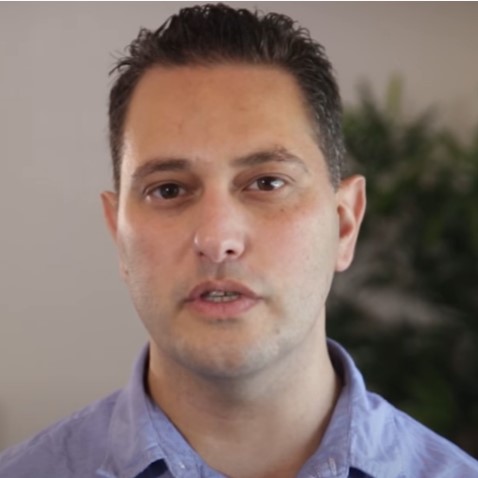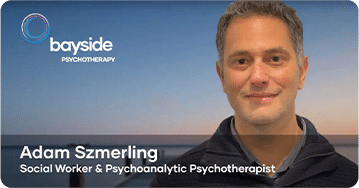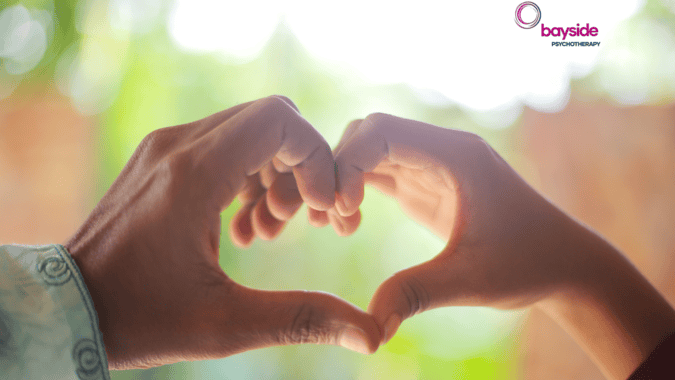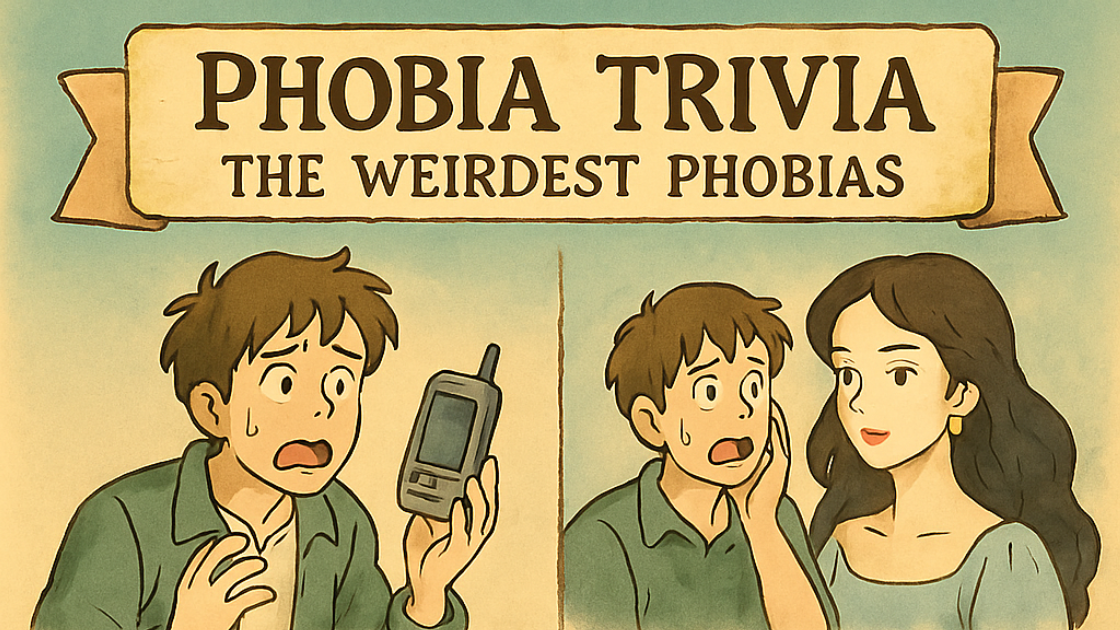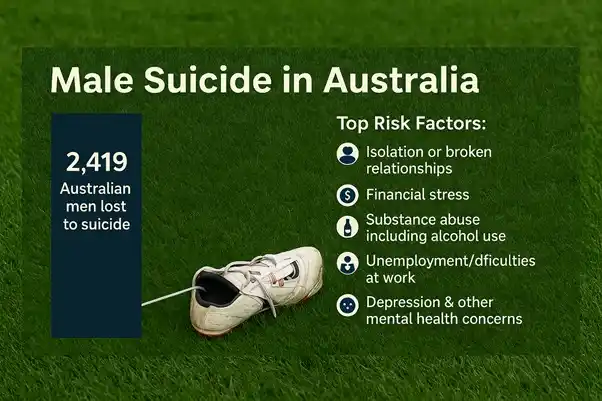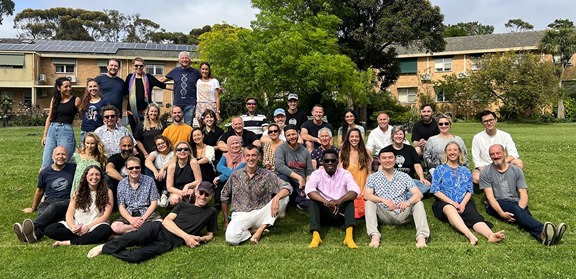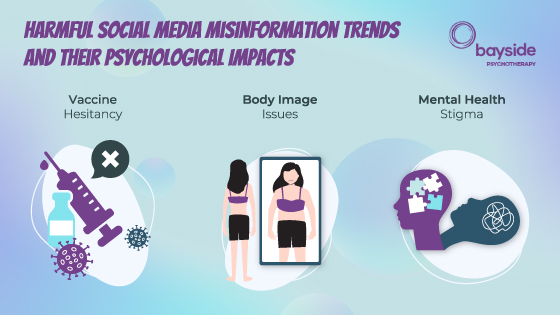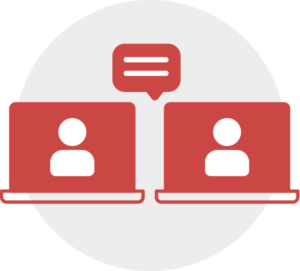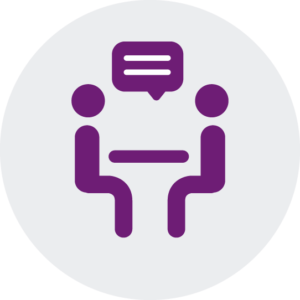What Are Australians Most Afraid Of? New Data Reveals The Nation’s Top Phobias
From snakes and spiders to needles and ghosts, fear takes many forms. But what do Australians fear most in 2025?
At Bayside Psychotherapy, our expert team, led by Adam Szmerling with years of experience, has analysed Google search trends alongside our own de-identified clinical insights to reveal the nation’s top phobias. As an intent based platform, Google captures our deepest anxieties, often more candidly than we admit to friends or therapists. Australians may not always speak openly about their fears, but they do search for them.
A deep dive into national and state-level keyword trends reveals which phobias Aussies are most curious about or concerned about. The results are both surprising and insightful.
While traditional fears like confined spaces and creepy crawlies still appear, search spikes for Trypanophobia (needles), Trypophobia (holes), and even Phasmophobia (ghosts) reflect a more complex and evolving anxiety landscape.
What is a Phobia, and When Does Fear Become a Problem?
Everyone feels afraid sometimes it’s a natural response to danger. But when fear becomes persistent, intense, and triggered by something that isn’t life-threatening, it may be a phobia. Phobias are a type of anxiety disorder that can significantly interfere with a person’s daily life, relationships, and mental well-being.
Phobias often go beyond ordinary fear. They can cause extreme physical and emotional reactions even when the feared object or situation poses no real harm.
Common Symptoms of a Phobia May Include:
- Sudden panic attacks or overwhelming dread
- Nausea, upset stomach, or dizziness
- Avoidance behaviour (e.g., taking longer routes to avoid a location)
- Difficulty breathing or feeling like you’re choking
- Excessive sweating, shaking, or rapid heartbeat
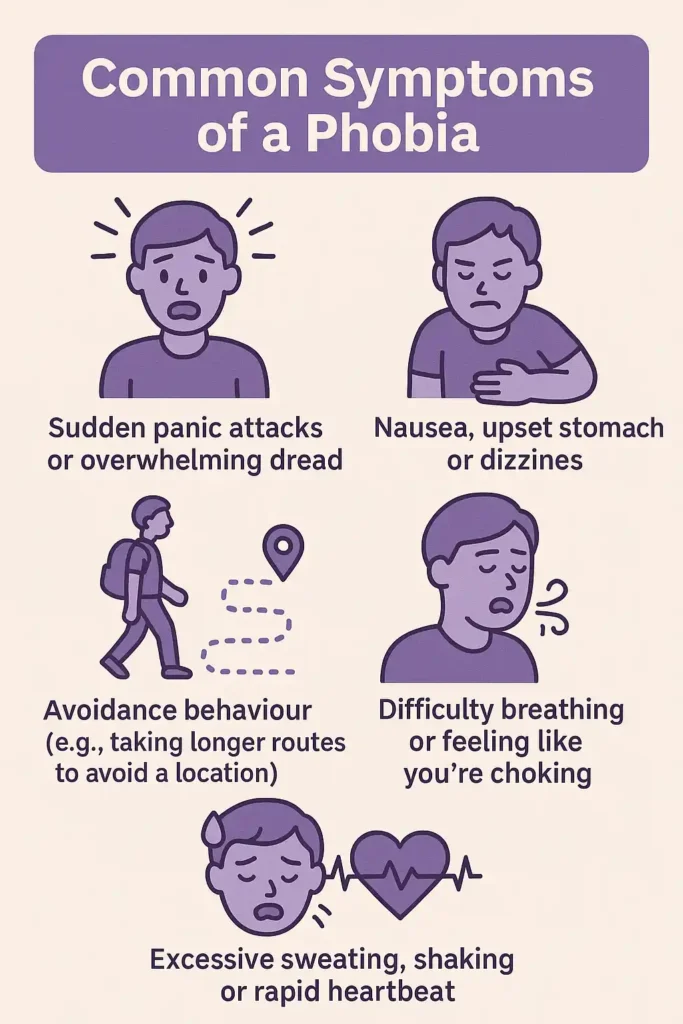
Australia’s Top 10 Most Searched Phobias
Ever searched for a fear you couldn’t quite explain? You’re not alone. New data on Australia’s most searched phobias reveals a deep curiosity about both common and quirky fears.
| Rank | Phobia | Desscription | Category | Search Volume (AU) |
|---|---|---|---|---|
| 1 | Agoraphobia | Fear of open spaces or crowds | Social | 27,100 |
| 2 | Trypanophobia | Fear of needles/injections | Health/Wellness | 27,100 |
| 3 | Trypophobia | Fear of holes | Weird | 27,100 |
| 4 | Hypochondria | Fear of illness | Health/Wellness | 18,100 |
| 5 | Phasmophobia | Fear of ghosts or the supernatural | Supernatural | 18,100 |
| 6 | Xenophobia | Fear of strangers or foreigners | Travel | 14,800 |
| 7 | Claustrophobia | Fear of confined spaces | Spatial | 9,900 |
| 8 | Emetophobia | Fear of vomiting | Health | 9,900 |
| 9 | Thalassophobia | Fear of the ocean | Nature | 9,900 |
| 10 | Arachnophobia | Fear of spiders | Animal/Insects | 4,400 |
Topping the list are Agoraphobia (fear of open spaces or crowds), Trypanophobia (fear of needles or injections), and Trypophobia (fear of holes)- each with a monthly search of over 27 K. Around 28.8% (5.7 million people) had experienced an Anxiety disorder, such as Social Phobia or Post-Traumatic Stress Disorder, according to the Australian Bureau of Statistics (2020-2022) data.
Health-related anxieties are prominent, with Hypochondria (fear of illness) and Emetophobia (fear of vomiting) also ranking high. Then there are more specific fears like Phasmophobia (fear of ghosts), Arachnophobia (fear of spiders), and Thalassophobia (fear of the ocean), showing that our worries range from the supernatural to the natural world.
With mental health awareness growing in Australia, it’s clear we’re not just searching, we’re also trying to understand.
What is the #1 Fear In Each Australian State?
Here’s what Aussies are Googling in each state.
| AU State | Top Phobias | Monthly Searches | Niche |
|---|---|---|---|
| NSW | Trypophobia | 9900 | Social |
| Victoria | Trypophobia | 8100 | Health/Wellness |
| QLD | Agoraphobia, Trypophobia, and Trypanophobia (All three phobias are feared equally.) |
5400 | Social, Health/Wellness and Weird |
| WA | Trypophobia | 2900 | Weird |
| SA | Agoraphobia, Trypophobia, and Trypanophobia (All three phobias are feared equally.) |
1900 | Social, Health/Wellness and Weird |
| Tasmania | Agoraphobia | 480 | Social |
| NT | Trypophobia | 140 | Health/Wellness |
From coast to coast, Australians are typing their fears into Google, and the findings reveal striking similarities across states.
Trypophobia, the fear of small clustered holes, ranks as the most searched phobia in New South Wales, Victoria, Western Australia, and the Northern Territory. This peculiar yet highly common fear is gaining attention online, despite not being officially recognised in diagnostic studies like the DSM-5.
Queensland and South Australia show a three-way tie, with Agoraphobia (fear of open spaces), Trypanophobia (fear of needles), and Trypophobia all ranking equally, highlighting a mix of social anxiety, health-based fear, and unusual aversions.
Meanwhile, Tasmania’s top fear is Agoraphobia, perhaps influenced by its more rural geography and isolation.
Sydney vs Melbourne – Who’s More Fearful?
When it comes to fears, are Sydneysiders more anxious than Melburnians? Based on monthly search volumes, the race is surprisingly neck and neck, but Sydney just slightly edges ahead in certain areas.
| List of Phobias | Description | Niches | MSV Sydney | MSV Melbourne |
|---|---|---|---|---|
| Trypophobia | Fear of holes | Weird | 6600 | 6600 |
| Agoraphobia | Fear of open spaces or crowds | Social | 5400 | 5400 |
| Hypochondria | Fear of illness | Health/Wellness | 3600 | 3600 |
| Phasmophobia | Fear of ghosts or the supernatural | Supernatural | 3600 | 3600 |
| Emetophobia | Fear of vomiting | Health | 1900 | 1900 |
| Claustrophobia | Fear of confined spaces | Spatial | 2400 | 1900 |
| Arachnophobia | Fear of spiders | Animal/Insects | 880 | 880 |
| Acrophobia | Fear of heights | Spatial | 880 | 720 |
| Hydrophobia | Fear of water (commonly linked to rabies) | Nature | 720 | 720 |
| Megalophobia | Fear of large things | Object | 720 | 720 |
| Hippopotomonstrosesquipedaliophobia | Fear of long words | Language | 720 | 720 |
| Submechanophobia | Fear of partially or fully submerged artificial objects | Objects | 480 | 480 |
| Mysophobia aka Verminophobia | Fear of dirt and germs | Health/Wellness | 330 | 330 |
| Scopophobia | Fear of being stared at | Social | 320 | 320 |
| Thanatophobia | Fear of death or dying | Health/Wellness | 390 | 390 |
| Nyctophobia | Fear of the dark | Nature | 390 | 260 |
Take Trypophobia (the fear of clustered holes) it tops the list in both cities with 6,600 monthly searches each. However, Sydney shows higher search interest in Claustrophobia (2,400 vs. Melbourne’s 1,900), which could be thanks to its packed public transport and tighter urban spaces.
Interestingly, both cities show identical concern over health-related fears like Trypanophobia (needles) and Hypochondria (illness), each drawing thousands of monthly searches. Acrophobia (heights) and Nyctophobia (darkness) are searched for more in Sydney than in Melbourne.
What might explain this pattern? Are Sydney’s tall buildings and buzzing nightlife making residents more prone to a fear of heights and darkness? Or are Sydneysiders simply more open about exploring their mental health online?
Sydney vs Melbourne: Phobia Search Comparison Table
| Category | Observation |
|---|---|
| Most Searched Phobia | Trypophobia (Fear of holes) 6,600 searches in both cities |
| City with More Unique Highs | Sydney slightly leads in Acrophobia (880 vs 720) and Nyctophobia (390 vs 260) |
| Shared Fear Patterns | 13 out of 17 phobias have identical search volumes in both cities |
| Health/Wellness-Driven Fears | Trypanophobia, Hypochondria, Emetophobia, Mysophobia, Thanatophobia equally strong in both |
| Social-Based Fears | Agoraphobia and Scopophobia show up equally, highlighting urban anxiety |
| Less Common Fears (< 500) | Scopophobia (320), (480), Mysophobia (330) |
| Consistent National Trend? | Yes. Almost all phobias show a parallel fear profile between the two cities |
| Notable Differences | Sydney users are slightly more likely to search height & dark-related fears |
| Quirky Fears Shared | Hippopotomonstrosesquippedaliophobia: 720 searches in both |
Sydney is marginally more fearful, but the difference is not statistically significant. Overall, both cities exhibit similar levels of fear-related search behaviour.
Phobia Trivia Corner – The Weirdest Phobias We Found
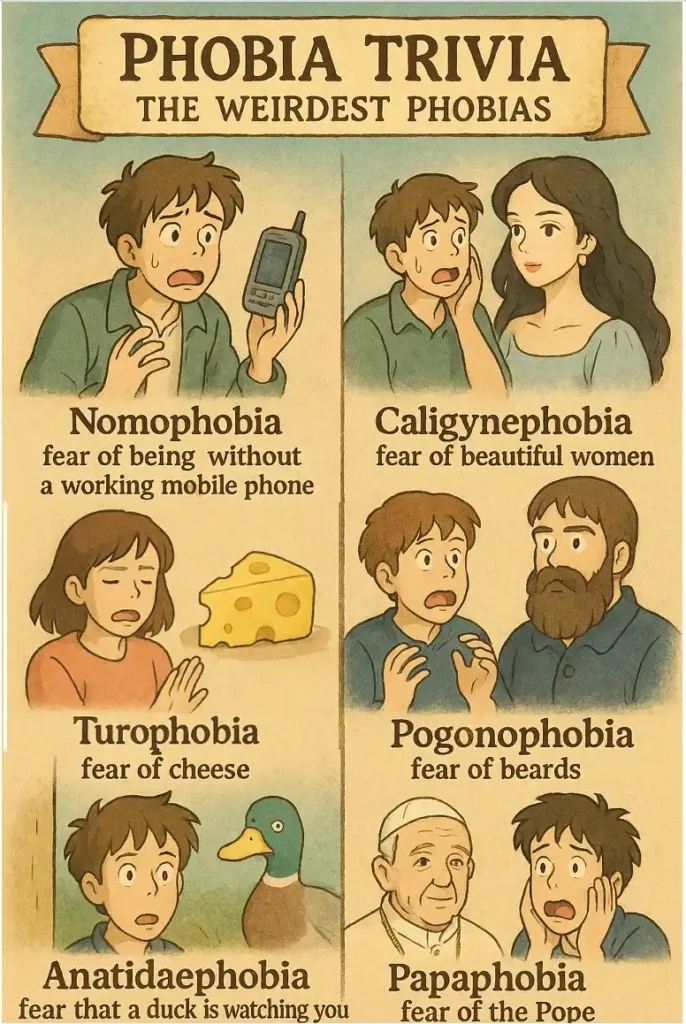
While phobias like Agoraphobia or Trypanophobia are grounded in real-world anxieties, Australians are also Googling some truly unexpected, and sometimes hilarious, fears. Did you know there are more than 400 phobias known today? Here are a few that stood out:
Nomophobia – Fear of being without a mobile phone
Believe it or not, it’s a recognised phenomenon. In a country where we spend nearly 3 hours a day on our phones (source: Statista), it’s no surprise that the idea of losing signal or misplacing a phone can cause severe stress.
Caligynephobia – fear of beautiful women
Turophobia – fear of cheese
Anatidaephobia – fear that a duck is watching you
Pogonophobia – Fear of beards
It may sound odd, but it’s documented. While many Aussies proudly rock beards (Like Hugh Jackman), others might feel uneasy around facial fuzz.
Papaphobia – Fear of the Pope
One of the rarest phobias out there, Papaphobia is an irrational fear of the Pope or the papacy. This one’s more historical than common.
Hippopotomonstrosesquipedaliophobia – Fear of long words
The irony is rich: it’s a long word describing the fear of long words! While not officially recognised in diagnostic manuals, it does appear in pop culture and meme pages, and plenty of Aussies are searching for it.
DYK – Some fears can be inherited, potentially through DNA. (source: Scientific American 2000, Scientific American 2013)
Why Understanding Phobias Matters
Ever wondered why some people freeze at the sight of a spider or avoid flying altogether?
Phobias are more than just fear; they’re intense, often overwhelming reactions that can impact daily life. Phobias can limit a person’s freedom and well-being in social situations, to heights, or enclosed spaces.
Phobias can appear irrational, but they have deeper psychological underpinnings. As a symptom of fixation, the more someone avoids the feared object or situation, the more firmly it takes hold. This is often because the fear is displaced from another source, such as a past trauma or experience that was too difficult to process at the time.
For example, someone might develop a strong fear of elevators after a stressful life event that had nothing to do with elevators. The word elevator may become linked as a reference point to the original stressful event. The mind shifts the anxiety onto something concrete (elevator in this example), making the phobia feel more manageable, even though it does not resolve the original issue.
While the phobia may serve to contain or channel anxiety, it can also keep a person stuck in a cycle of avoidance and fear.
Understanding what triggers these fears helps build empathy, reduce stigma, and encourage people to seek support. Phobias are thought to affect around 11% of the Australian population (source: Australian Psychology Services). Knowledge is key to recognising when fear becomes a barrier, and how to overcome it gently.
Phobia or Just a Fear? Know the Difference
Feeling fear is a normal human experience; it’s a natural human response to danger. But when fear becomes overwhelming, irrational, and begins to interfere with your daily life, it may be more than just fear it could be a phobia.
Fears are typically tied to real or immediate threats and often fade once the situation passes. Phobias, on the other hand, are mental health conditions that can trigger anxiety even when the perceived danger is minimal or nonexistent.
Understanding the difference is key to knowing when to seek help.
Featured on Channel 7’s House of Wellness for Hypnotherapy and Phobias
Fear vs. Phobia: What’s the Difference?
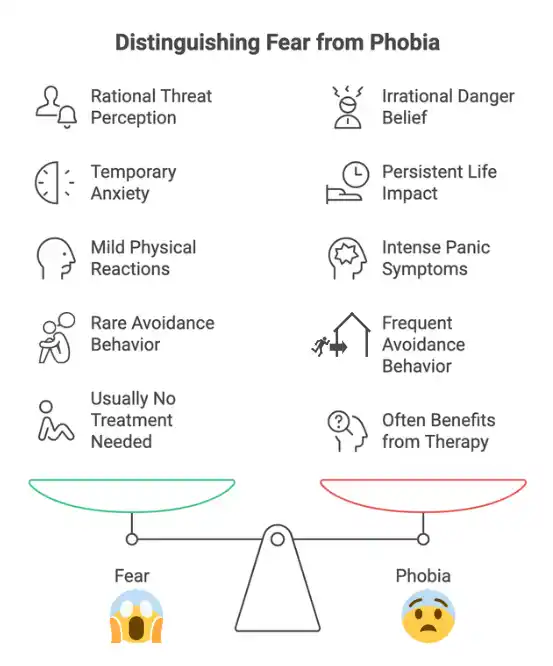
You’re Not Alone! These Australian Celebrities Too Have Phobias!
Phobias don’t discriminate. Even celebrities live with them. From butterflies to coat hangers, these well-known Aussie stars have openly shared their fears, reminding us that no one is immune to anxiety or discomfort.
Nicole Kidman – Fear of Butterflies (Lepidopterophobia)
Despite her poised public image, Nicole has admitted in multiple interviews that she’s terrified of butterflies.
“I jump out of planes, I could be covered in cockroaches, I do all sorts of things. But I just don’t like the feel of butterflies’ bodies.” (Source: Abc.net.au)
Kylie Minogue – Fear of Clothes Hangers
Yes, the pop princess finds the sound and look of coat hangers unsettling.
“I don’t like the way they sound when you put them in the wardrobe.” (Source: Telegraph.co.uk)
Rebel Wilson – Fear of Spiders (Arachnophobia)
Rebel once admitted she was terrified while filming in locations known for spiders.
Hugh Jackman – Fear of Underperforming, The Dark & Heights (Atychiphobia, Nyctophobia & Acrophobia)
Hugh Jackman has openly revealed he was a “fearful kid” with a significant fear of both the dark (Nyctophobia) and heights (Acrophobia). He also mentioned in an interview with Oprah that he hated feeling the fear of not being good enough and underperforming when the stakes are high.
Chris Hemsworth – Fear of Forgetfulness & Heights – (Athazagoraphobia & Acrophobia)
Chris Hemsworth has discussed his fear of heights (Acrophobia), notably during an appearance on the “Jimmy Kimmel Live!” show while promoting “The Avengers.” He also confronted this fear directly in his National Geographic series “Limitless,” where he climbed a 100-foot rope suspended over a canyon. However, his biggest fear is forgetting his family due to a genetic predisposition to Alzheimer’s disease.
Can Phobias Be Cured?
Yes, phobias are not only real, but they’re also treatable. While fears can feel overwhelming or irrational, they don’t have to control your life. Whether a fear of needles deters someone from a doctor visit or the ocean triggers panic, recognising how common these fears are is the first step. If your fears are interfering with daily routines, relationships, or work seeking support can be an empowering step.
At Bayside Psychotherapy, we provide compassionate, tailored treatment options to help you manage and gradually overcome your phobias.
Our therapists use evidence-based approaches such as:
- Cognitive Behavioural Therapy (CBT): Helps you reframe unhelpful thoughts and reduce anxious reactions.
- Psychodynamic Psychotherapy: For deeper issues underpinning phobias
- Hypnotherapy: A gentle method to explore and shift unconscious fear triggers.
- Exposure Therapy: Gradual, supported exposure to the feared situation in a safe, controlled way.
- Flexible Delivery: Choose from online therapy or in-person sessions at our Melbourne clinic.
We understand that every phobia is unique, whether it’s fear of flying, crowds, needles, or something uncommon. We aim to help you feel safer, calmer, and more in control.
Book your confidential consultation with a qualified therapist today and take the first step toward freedom from your phobia!
Here are a couple of blogs written on this topic you might find useful:
Is It Time For The AFL To Cast A Menta...
At Bayside Psychotherapy we are passionate about mental health and like many fellow Melbournians, many on our team are avid AFL fans. So when two of our.
Exploring Emerging Therapies: Understa...
At Mind Medicine Australia, we are dedicated to transforming the trea.
The Balance of Power in Romantic Relat...
Why do some relationships thrive while others feel like a constant tug-of-war? Power dynamics lie at the heart of this balance.
The Dark Side of Social Media: How Mis...
Ever find yourself scrolling mindlessly on your phone, only to realise the hours have slipped away? You’re not alone. For ma.

